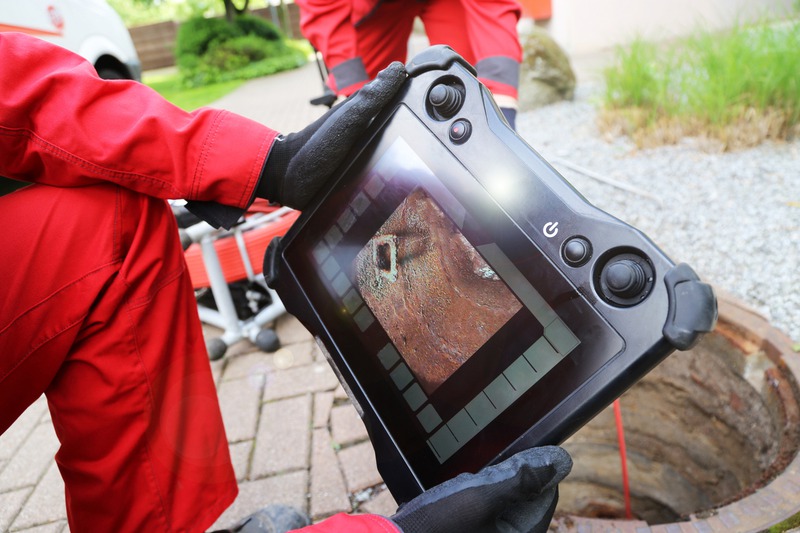Sewer camera inspections involve professionals using specialized waterproof cameras to explore underground sewer lines. These inspections help identify blockages, leaks, and structural issues without having to dig up pipes. The process starts with inserting a flexible cable with a camera into your sewer system. As the camera moves through the pipes, it sends real-time video footage to a monitor, allowing professionals to pinpoint problems. This non-invasive method is essential for maintaining efficient plumbing, preventing costly repairs, and ensuring long-term home safety and hygiene.
The Basics of Sewer Camera Inspections
Sewer camera inspection services involve using specialized cameras to view inside sewer lines. These cameras navigate through pipes, offering real-time footage to spot issues such as blockages, leaks, or damage. This process helps ensure your sewer system functions well and prevents future problems. By identifying issues early, homeowners can avoid costly repairs and maintain the integrity of their plumbing system. This technology is a proactive way to keep sewer lines in optimal condition.
Why It’s Important to Check Your Sewers
Sewer lines handle a big job, so maintaining them is crucial. Regular inspections can detect issues early, preventing expensive repairs and avoiding sudden sewage backups. These check-ups ensure your plumbing system functions smoothly and help you dodge unpleasant surprises. By catching potential problems like clogs or leaks sooner, inspections protect your home and keep everything running efficiently. Consistent maintenance not only saves money in the long run but also provides peace of mind, ensuring your sewer lines stay in top condition.
Tools and Equipment Used in Inspections
Professionals utilize state-of-the-art equipment for sewer inspections:
-
Camera Systems: High-resolution cameras with lights provide clear images inside the pipes.
-
Locators: These gadgets help pinpoint the exact location of the camera within the pipes.
-
Cables and Reels: Long cables allow the camera to travel through extensive plumbing systems.
Step-by-Step Process of a Sewer Camera Inspection
Let’s walk through the typical process:
-
Initial Assessment: Technicians assess the property and determine the best entry point.
-
Camera Insertion: The camera is carefully inserted into the sewer line through an access point, often a cleanout.
-
Live Monitoring: As the camera progresses, the team monitors the footage to identify any issues.
-
Location Detection: Using locators, technicians can map out problems without excavating your yard.
-
Diagnosis and Report: After the inspection, a detailed report highlights any concerns and offers recommendations for repair.
Common Problems Identified During Inspections
Inspections can reveal a variety of issues, including:
-
Tree Roots: Roots can infiltrate pipes, causing blockages and damage.
-
Pipe Corrosion: Older pipes may be corroded or worn out.
-
Blockages: Debris, grease, and waste buildup can lead to serious clogs.
Understanding the Costs Involved
The cost of a sewer camera inspection depends on factors such as location, pipe length, and how easily accessible the pipes are. Although it might feel like an extra expense, this inspection is a smart investment. It helps detect minor issues before they become major, saving you from expensive repairs later. By identifying blockages, cracks, or leaks early, you can maintain your plumbing more effectively and avoid the inconvenience and high costs of emergency plumbing situations.
The Role of Professionals in Inspections
Professional plumbers offer essential expertise and experience. They know exactly what to look for and can accurately interpret camera footage during inspections. This skill ensures that any plumbing issues, including a hidden water leak, are identified and addressed quickly and correctly. By hiring professionals, you can trust that the job will be completed efficiently, reducing potential future problems. Their knowledge provides reassurance, saving you time and stress while ensuring your plumbing system runs smoothly and effectively.
Preventive Maintenance Tips
Regular inspections are part of a smart maintenance strategy. Here’s what else you can do to keep your sewer system running smoothly:
-
Avoid Flushing Non-Flushables: Items like wipes and sanitary products can cause clogs.
-
Be Mindful of What Goes Down the Drain: Dispose of grease, oil, and coffee grounds in the trash.
-
Regular Cleaning: Schedule routine cleaning to keep your pipes clear.
When to Consider a Camera Inspection
If you suspect a problem or notice signs like slow drains, gurgling toilets, or unpleasant odors, it’s time to call the pros. Regular inspections can also be beneficial if your home is older or surrounded by trees.
Understanding the condition of your sewer lines can save time and money, whether dealing with potential blockages or planning gas pipe repair in Salem. The right inspection can provide invaluable insights into your home’s plumbing health.
Final Thoughts
Sewer camera inspections are crucial for home maintenance. They uncover hidden problems, preventing potential disasters. Professionals use advanced cameras to diagnose issues precisely, ensuring your plumbing system stays in optimal condition. Regular inspections and proactive measures help shield your home from unexpected plumbing failures. By using this technology, you can identify blockages, leaks, or tree root intrusions early, saving time and money on repairs. Keeping up with inspections means peace of mind and a smoothly running household plumbing system.

